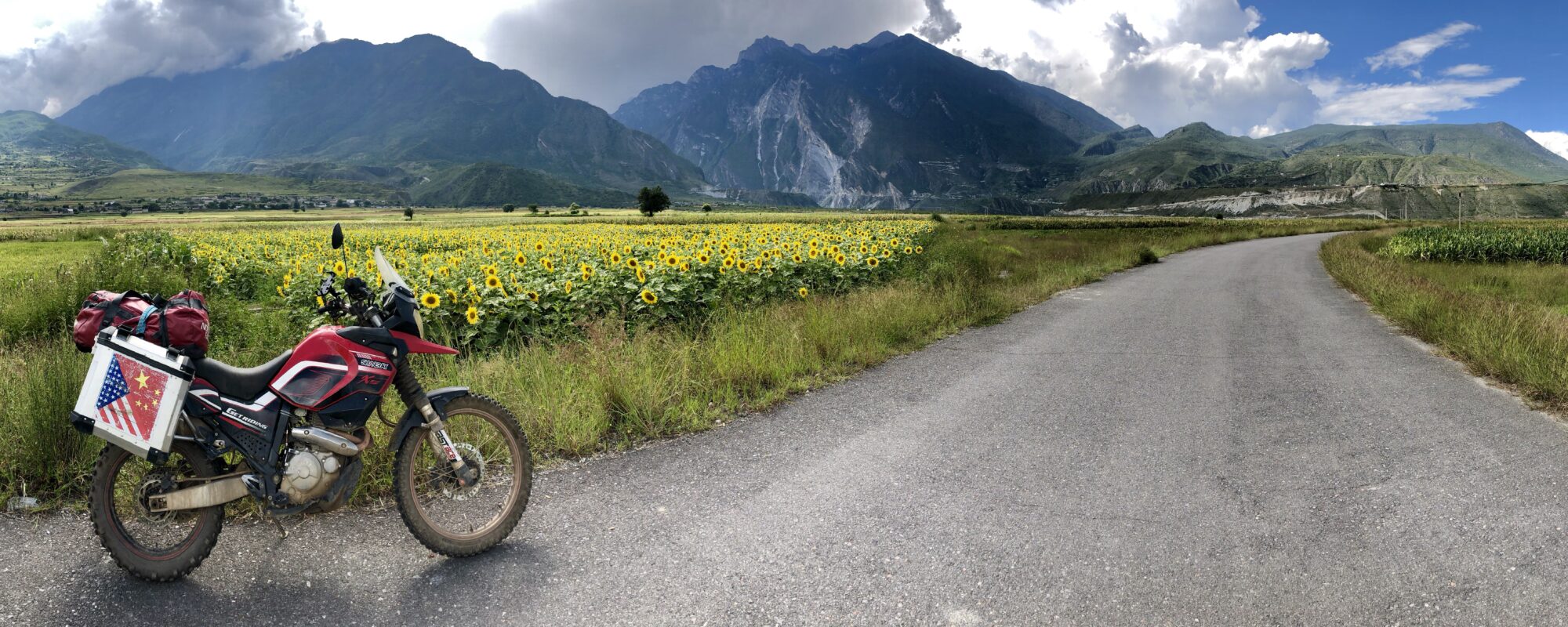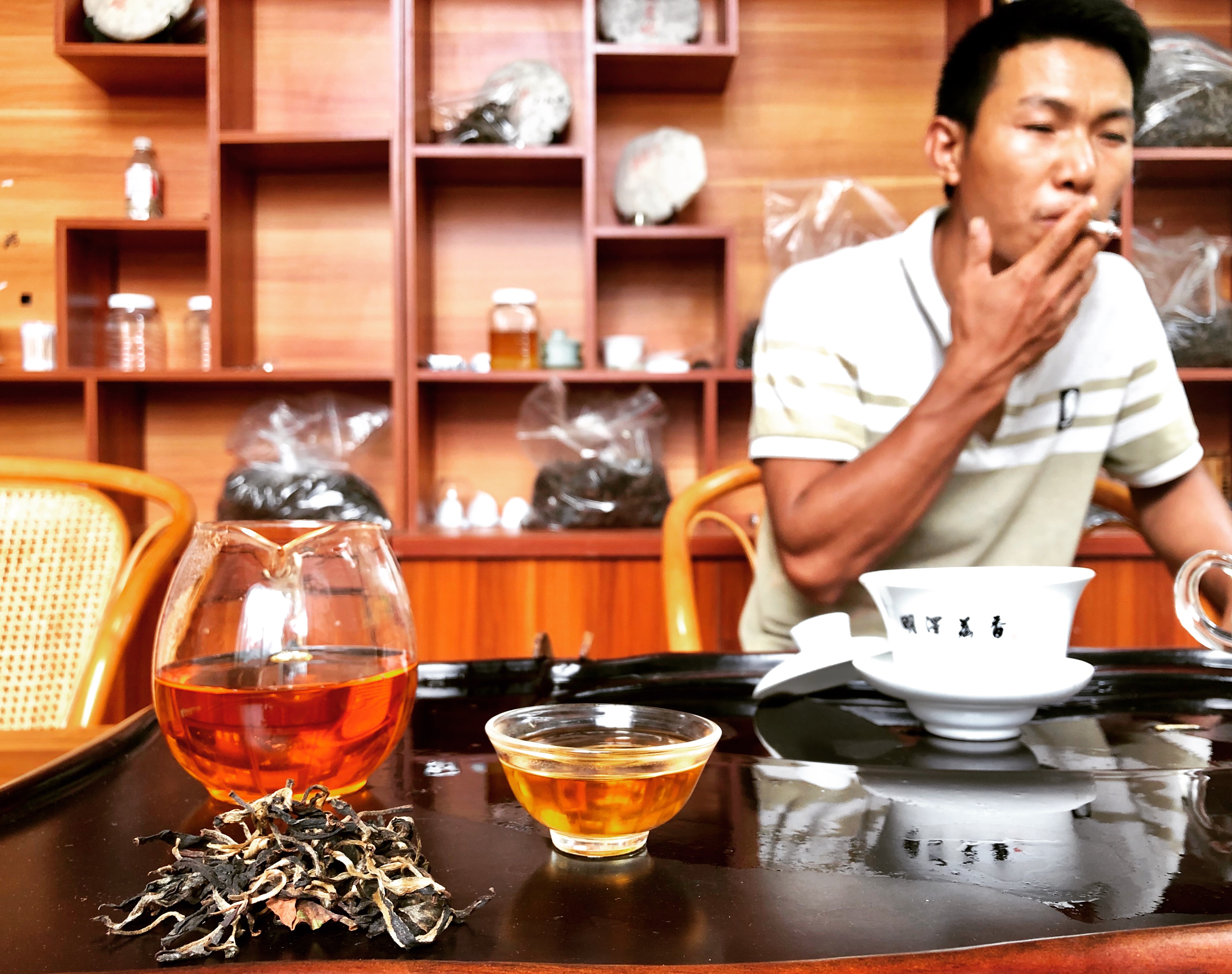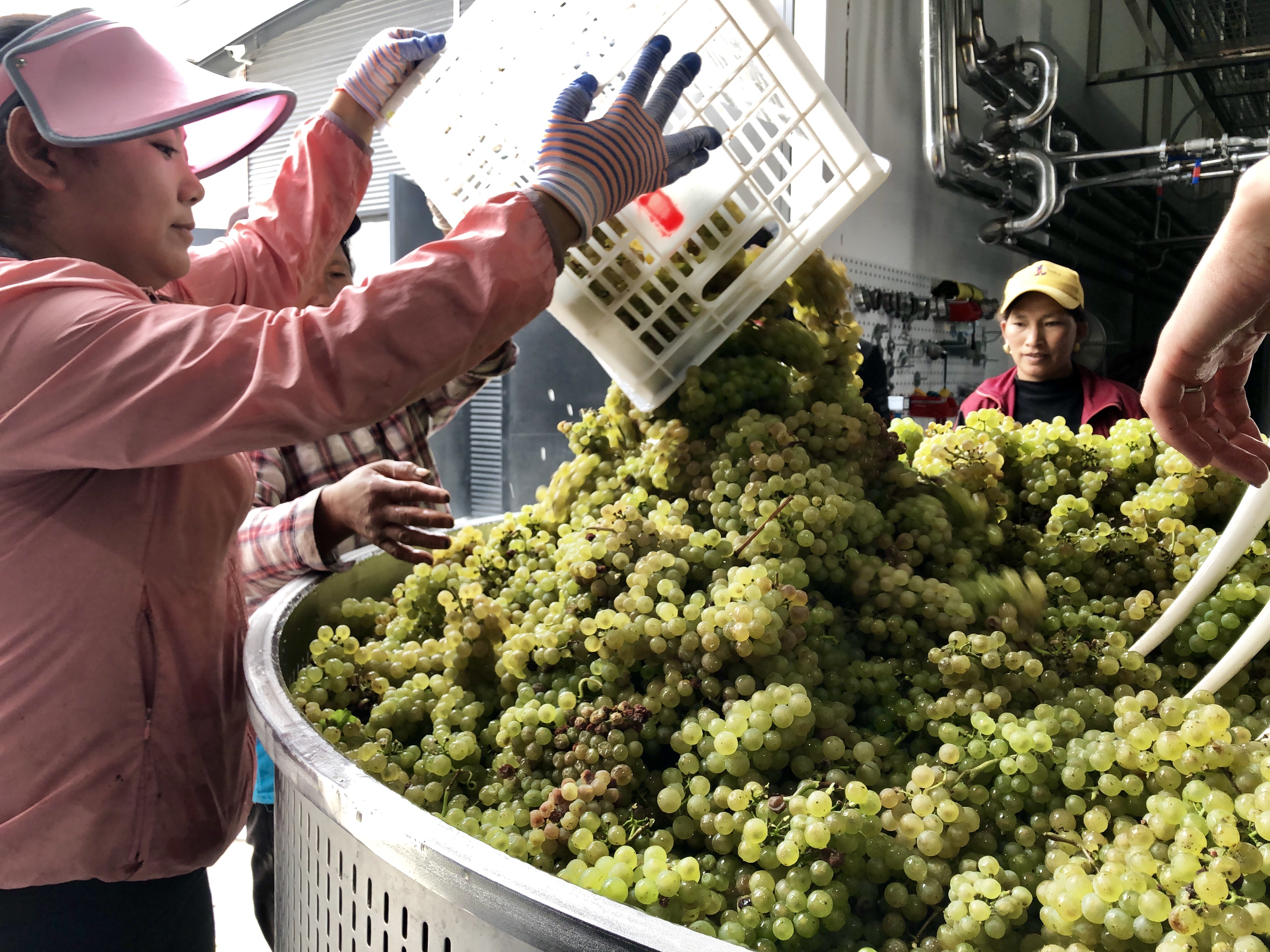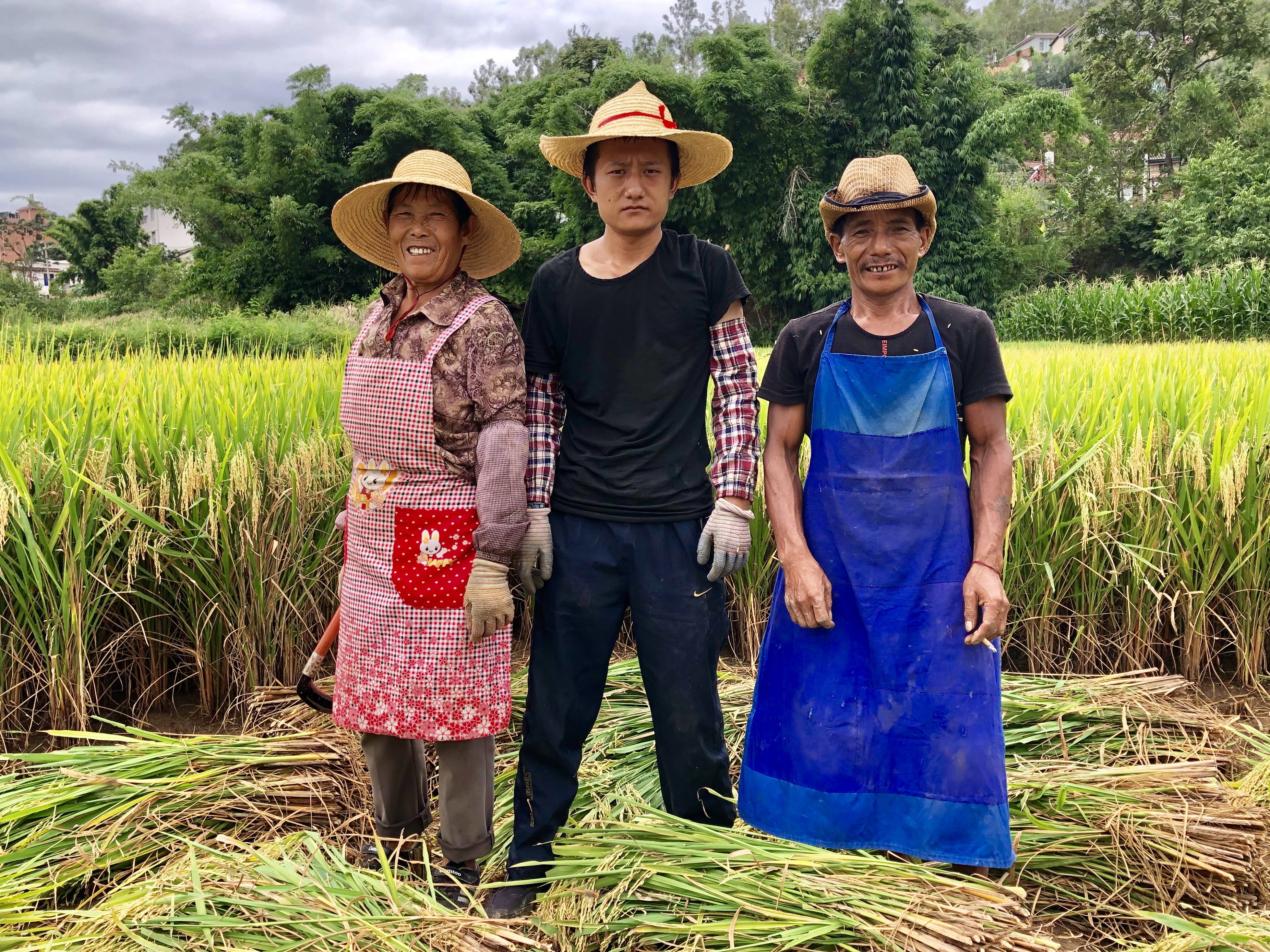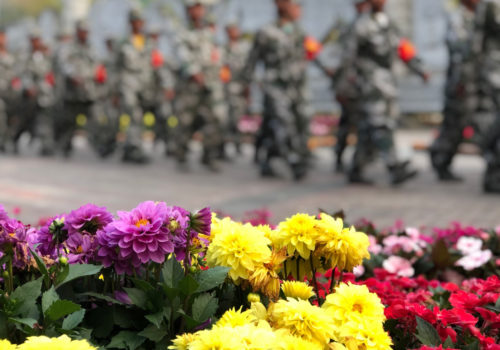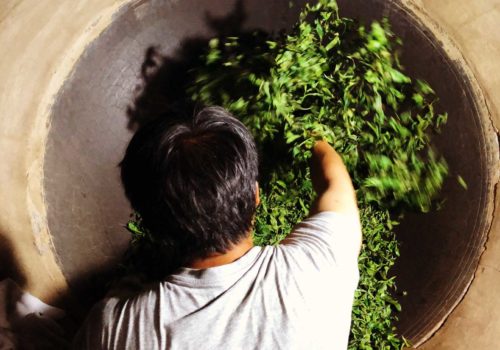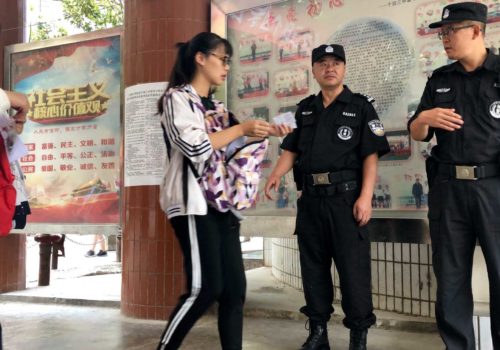YUNNAN PROVINCE, China — The traffic police unit in this region’s city of Lincang had never before issued a motorcycle license to a foreigner. Phone calls went up the chain of command and instructions came down: get a new visa, change your Chinese name, prove you have at least nine fingers and take a driving test in Mandarin. Months of red tape and one failed exam later, I was licensed to ride.
I bought my motorcycle from a foreigner who was leaving Yunnan for good. He had dreamed of exploring the province’s backcountry but with a wife and two kids, his sense of adventure always deferred to his sense of responsibility. I had no such qualms, and so it was that I scored a two-year old Shineray with only 700 miles on it. The cherry red bike—a 400cc dual-sport—had enough power for Yunnan’s new highways and also knobby tires for the rough back roads that crisscross its mountainous terrain. Both would prove useful as I explored the ancient tea horse road.
The old trade route stretches from Yunnan’s southern tropics to the Tibetan plateau in the north and has been carved step-by-step over a thousand years by caravans swapping tea leaves for warhorses, salt, cloth or medicines. In fact, it was more a trade network than a single road. A web of trails extends down to Southeast Asia and westward through Tibet to India, connecting the region’s isolated and disparate people groups through a flow of goods, technology, ideas, religion and culture.
Today, the ancient tea horse road has fallen into disuse, but a network of new highways, power lines and cell towers now connects the region, sometimes alongside the remnants of hoof-worn stones. As modern development sweeps across the province, lives are being transformed. Subsistence farmers previously threatened by poor yields and famine now eat meat at every meal. Cultures once remote are now for the first time connected to the modern economy.
From August to October 2019, I rode my motorcycle more than 2,000 miles along Yunnan’s section of the ancient tea horse road. My trip was sufficiently ill-timed to catch both the monsoon season in the south and onset of winter winds in the north. But it was full of wonder. I hiked the mountains where tea is said to have been discovered and spoke with the ancients who still remember mule caravans carrying loads through the streets. I met farmers, construction workers and religious pilgrims all seeking better lives. I waited as work crews cleared landslides from pockmarked mountain roads and painted yellow stripes on freshly asphalted highways. And near Shangri-La, as I sputtered to a standstill in a tunnel at 13,000 feet, I learned that even motorcycles can suffer altitude sickness.
I also discovered that despite unprecedented change along the ancient tea horse road, one thing remains: the centrality of tea. It still connects the region, not only through trade, but also hospitality—the invariable invitation to a cup of tea, conversation and a new friendship. I was the undeserving recipient of such kindness time and again and am honored to be able to share a snapshot of the people and places, diversity and development of Yunnan’s ancient tea horse road.

Hoof-worn stones still pave the way in some places, the weathered remains of a once-vibrant trade route. One of the best-preserved sections is near Nakeli, a former trading outpost north of the city of Pu’er. Nakeli, Pu’er

In the Bada Mountains of southern Yunnan, the Bulang people are said to be the first to have cultivated tea trees thousands of years ago. Trade routes flowed from these tea mountains and tea leaves were currency, a staple in the diet of Tibetans who otherwise lacked vegetables due to the harsh northern climate. Zhanglang, Xishuangbanna

A photo exhibit near Dali shows how traders traveled along the ancient tea horse road in the 1930s. While many used mules, yaks or camels to pack their goods, some actually carried unthinkable loads on their own backs with nothing more than woven straw sandals on their feet. Shuanglang, Dali. Yadongying Collection, Japan (亚东印画辑)

Mr. Kuang remembers those days well from sitting on this street as a boy when the caravans would pass through Tiger Street village. Caravan leaders would bang a gong to announce their arrival and avoid head-on collisions with caravans going the opposite way on the narrow trails. Now 86 years old, Mr. Kuang, although articulate, is deaf and after yelling straight into his ear, I had to hold up fingers to communicate my age. “Not even half my age!” he scoffed. Tiger Street, Dali
Today, the tea trade is alive and well. Over a cup of aged Pu’er tea, Ai Wenling describes how rising tea prices have enabled young men to leave itinerant jobs in faraway cities and move back to their home villages to provide for their families. In 2014, after 20 years working in Thailand, Wenling finally moved back to his wife’s village in Yunnan to try his hand at tea. Lao Man’e, Xishuangbanna

Of course the ancient tea horse road helped transport more than tea. It was an important trading hub for items like salt, cloth and medicines. And it served to exchange new ideas and technologies as exotic products from afar were integrated into local markets. Here Burberry-style cloth emerges from a traditional loom in a weaver’s shop. Lugu Lake, Lijiang

Some items weren’t easily transported along the trade route but their technologies were. The Guo family still makes kiln-fired clay bricks just outside Weishan, a historic hub on the ancient tea horse road. In order to attract tourism, the local government is renovating Weishan’s old town district and traditional architecture, requiring all buildings to install clay tile roofs. That’s good news for the Guo family, which also manufactures the tiles. Weishan, Dali
Old products were also revolutionized by new technologies. Several French companies have injected capital and foreign know-how to develop a budding wine industry outside the legendary city of Shangri-La. In 2016, Moët Hennessy, the luxury goods mogul, released its first vintage, Ao Yun 2013, a $300-per-bottle red made from its vineyards at the foot of the sacred Meili Snow Mountain. “They let us drink it at our year end party,” one grape farmer told me. “It’s better than the stuff from before that the local wine company made.” Benzilan, Shangri-La

People I met have expanded far beyond the physical limitations of a traditional trade route. This young woman livestreams on several e-commerce platforms to sell pomegranates and other fruit all over China. “You open them like this,” she instructs her 3,688 viewers. “See, I’m including this super big one just for you!” Tuguan, Dali

Diverse ethnic customs and religious practices also flowed along the route between Yunnan and Tibet, Southeast Asia and India. Almost a thousand years ago, monks from India and Myanmar brought Buddhist scriptures to southern Yunnan, where it is now the dominant religion. Here, Theravada Buddhists celebrate a local holiday in a Bulang village. Zhanglang, Xishuangbanna

Tibetan Buddhism also thrives along the northern section of the route and through Tibet into India. I met these Tibetan Buddhists on the very first day of their pilgrimage, when they fully prostrate themselves every three steps. “It will take three years to get to Lhasa,” one told me over fruit set out for them by a local shop owner. When another pilgrim saw my wide, unbelieving eyes, he spoiled his friend’s joke: they were just going to a local holy site about 15 miles away, a five-day journey. Benzilan, Shangri-La

While some ancient trading hubs have declined into ghost towns, others have built up over the centuries into some of the primary urban centers and tourist destinations we see in Yunnan today, such as Dali, Lijiang and Shangri-La. In Shangri-La’s central plaza, tourists pose in cutouts of China’s 55 officially recognized ethnic minority groups. Dukezong Old Town, Shangri-La

Sites along the route are attempting to cash in on Yunnan’s booming tourism industry and a renewed interest in the historic route. “Ancient Tea Horse Road” is inscribed into the wall at Ancient Tea Horse City, a tourist park near the city of Pu’er. The five-year old park features an old town-themed market, horse rides and a toboggan slide, but few tourists. Ancient Tea Horse City, Pu’er

Yunnan and sites along the route have expended considerable efforts to promote the tea horse road as part of a tourism development strategy. China Central Television (CCTV) films a special about the ancient tea horse road featuring a former caravan member. While filming a caravan scene, one horse relieved itself, splattering feces all over the director’s pant leg. “Does anyone have some tissue?” she calmly blared from her bullhorn. Nakeli, Pu’er

In the past as with today, trade brings challenges along with benefits. A village worker sprays my motorcycle tires with disinfectant to prevent spread of African swine flu between counties. The disease has ravaged China’s pig population and sent pork prices soaring, so these checkpoints were common throughout my journey. Jiujing, Pu’er

The rise of tourism has also affected the lives of local ethnic groups. Naxi artist Mr. Mu points to a rendering of his art shop in Lijiang he had to close over ten years ago because of rising rents. He blames the commercialization of the area by Han Chinese who have driven up prices and driven out the local Naxi people. Lashihai, Lijiang

Development has also endangered the route itself. In many places, remnants have given way to new highways or development zones. Here a new highway runs parallel to the old route before completely overtaking it. Nakeli, Pu’er

Much like the old route and new highway, I discovered, the region as a whole is attempting to navigate the balance between old and new. Livelihoods, ways of life and customs are all changing dramatically with infrastructure and economic development. Napa Lake, Shangri-La

Development in the region means opportunity abounds for some. This man joined a work crew to help “greenify” a new highway in northern Yunnan. Last year, this section of highway-in-progress took me seven hours to cross by minivan; this year, the trip was just one hour. Fugong, Nujiang

I also discovered how roads bring with them other risks. A family of four rolled its car, spilling baby formula across a new highway in southern Yunnan. I was one of the first to come upon the scene of two bloodied children, a weeping father and stoic mother. Thankfully, first responders from nearby Pu’er arrived shortly after. National Highway 213, Pu’er

Despite unprecedented change, the hospitality afforded traders along the ancient tea horse road is still offered to travelers today. The invitation to share conversation over a cup of tea is immediate, if not involuntary. “Just one more cup” quickly became an entreaty to “just one more day,” as hosts found countless reasons for me to postpone a departure. It’s a significant feat that I ever managed to complete my journey. Zhanglang, Xishuangbanna

Seventy years ago, Li Mingzhen married into Nakeli, an outpost along the ancient tea horse road. My afternoon tea with her family turned into a dinner of Dragon Phoenix Soup made from chicken and a snake they’d caught the night before. It extended into an overnight as she shared tales of caravans and bandits that used to pass through the area. “My family was labeled landlords,” she told me, recalling the Communist revolution. Still, “it was far better after liberation because the Communists dealt with all the thieves.” Nakeli, Pu’er
Members of the Peng family showed me how to harvest rice. After cutting it by hand, threshing the grain and hauling the bags out of their fields, they invited me to come eat with them. “When you have time, come see more of the country,” Mr. Peng told me. “China welcomes you.” Nanjian, Dali

Construction workers were some of the friendliest and most interesting people I met. They know first-hand what it takes to build the infrastructure that is revolutionizing the province. This tunnel worker was quick to post photos of us together to his social media and here adds my contact info on WeChat, the Chinese messaging app. Sankezhuang Tunnel No.2, Pu’er

Ai Pat, now 70, invited me into his home—little more than a wooden shack—and told me about his life as a survivor of leprosy, now for over 40 years. “‘Leper, leper, leper,’ neighbors used to call out when I came around,” he told me. “When the health workers first came,” he recounted, “they taught us how to clean our wounds with salt. We’d never known that,” he continued. “Even if we had, we couldn’t afford salt, so it wouldn’t have done us any good.” Despite his relegation to a leprosy village and sense of rejection, Ai Pat’s story is one of forgiveness and redemption. Jinghong, Xishuangbanna

As I approached Shangri-La at the edge of the Himalayas, I discovered that hot yak butter tea is the perfect remedy for a cold motorcycle ride. This woman of the Yi people made me a fresh batch, churning two lumps of sour butter into steaming tea and adding salt. It went down like liquid blue cheese, the calories thick and warm in my belly. She and her husband live on high-altitude barley and potatoes, but the day’s rain kept them inside by the wood fire and television. On the screen, Mao Zedong and Zhou Enlai debated whether or not to send Chinese troops to help North Korea as the United States prepared to invade the Korean Peninsula in 1950. “Now imperialist America is following the road of those Japanese invaders,” Mao declared. Nine Dragons, Shangri-La

My journey along the ancient tea horse road ended at the border between Yunnan and Tibet. Security is strict and I didn’t have the tour guide, private driver, tour group and travel visa required for entry.
“But you do have a motorcycle license, correct?” the officer asked me.
“Of course,” I assured him, recalling the grueling red tape and failed exam. I’d been asked to show it at only two of the countless checkpoints along my entire 2,000-mile journey.
“Well, I’m not going to check,” he said, as if doing me a favor. “Would you like some tea?”

